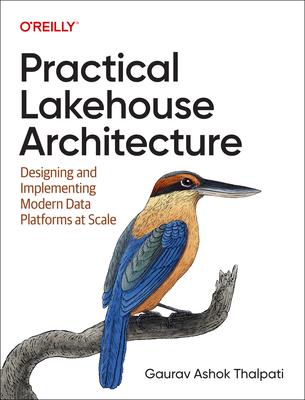This concise yet comprehensive guide explains how to adopt a data lakehouse architecture to implement modern data platforms. It reviews the design considerations, challenges, and best practices for implementing a lakehouse and provides key insights into the ways that using a lakehouse can impact your data platform, from managing structured and unstructured data and supporting BI and AI/ML use cases to enabling more rigorous data governance and security measures.
Practical Lakehouse Architecture shows you how to:
- Understand key lakehouse concepts and features like transaction support, time travel, and schema evolution
- Understand the differences between traditional and lakehouse data architectures
- Differentiate between various file formats and table formats
- Design lakehouse architecture layers for storage, compute, metadata management, and data consumption
- Implement data governance and data security within the platform
- Evaluate technologies and decide on the best technology stack to implement the lakehouse for your use case
- Make critical design decisions and address practical challenges to build a future-ready data platform
- Start your lakehouse implementation journey and migrate data from existing systems to the lakehouse
